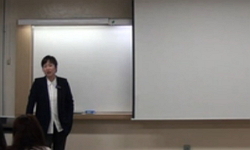<P>The circadian clock and cell cycle networks are interlocked on the molecular level, with the core clock loop exerting a multilevel regulatory role over cell cycle components. This is particularly relevant to the circadian factor Period 2 (Per...
http://chineseinput.net/에서 pinyin(병음)방식으로 중국어를 변환할 수 있습니다.
변환된 중국어를 복사하여 사용하시면 됩니다.
- 中文 을 입력하시려면 zhongwen을 입력하시고 space를누르시면됩니다.
- 北京 을 입력하시려면 beijing을 입력하시고 space를 누르시면 됩니다.


Model-driven experimental approach reveals the complex regulatory distribution of p53 by the circadian factor Period 2
한글로보기https://www.riss.kr/link?id=A107643126
- 저자
- 발행기관
- 학술지명
- 권호사항
-
발행연도
2016
-
작성언어
-
- 주제어
-
등재정보
SCOPUS,SCIE
-
자료형태
학술저널
-
수록면
13516-13521(6쪽)
- 제공처
-
0
상세조회 -
0
다운로드
부가정보
다국어 초록 (Multilingual Abstract)
<P>The circadian clock and cell cycle networks are interlocked on the molecular level, with the core clock loop exerting a multilevel regulatory role over cell cycle components. This is particularly relevant to the circadian factor Period 2 (Per2), which modulates the stability of the tumor suppressor p53 in unstressed cells and transcriptional activity in response to genotoxic stress. Per2 binding prevents Mdm2-mediated ubiquitination of p53 and, therefore, its degradation, and oscillations in the peaks of Per2 and p53 were expected to correspond. However, our findings showed that Per2 and p53 rhythms were significantly out-of-phase relative to each other in cell lysates and in purified cytoplasmic fractions. These seemingly conflicting experimental data motivated the use of a combined theoretical and experimental approach focusing on the role played by Per2 in dictating the phase of p53 oscillations. Systematic modeling of all possible regulatory scenarios predicted that the observed phase relationship between Per2 and p53 could be simulated if (i) p53 was more stable in the nucleus than in the cytoplasm, (ii) Per2 associates to various ubiquitinated forms of p53, and (iii) Per2 mediated p53 nuclear import. These predictions were supported by a sevenfold increase in p53's half-life in the nucleus and by in vitro binding of Per2 to the various ubiquitinated forms of p53. Last, p53's nuclear shuttling was significantly favored by ectopic expression of Per2 and reduced because of Per2 down-regulation. Our combined theoretical/mathematical approach reveals how clock regulatory nodes can be inferred from oscillating time course data.</P>
동일학술지(권/호) 다른 논문
-
p62- and ubiquitin-dependent stress-induced autophagy of the mammalian 26S proteasome
- National Academy of Sciences
- Cohen-Kaplan, Victoria
- 2016
- SCOPUS,SCIE
-
Control of inflammation by stromal Hedgehog pathway activation restrains colitis
- National Academy of Sciences
- Lee, John J.
- 2016
- SCOPUS,SCIE




 ScienceON
ScienceON






